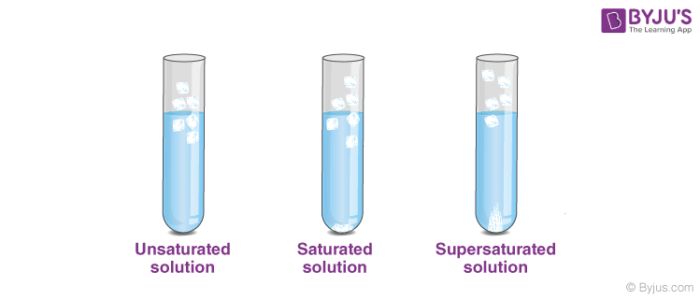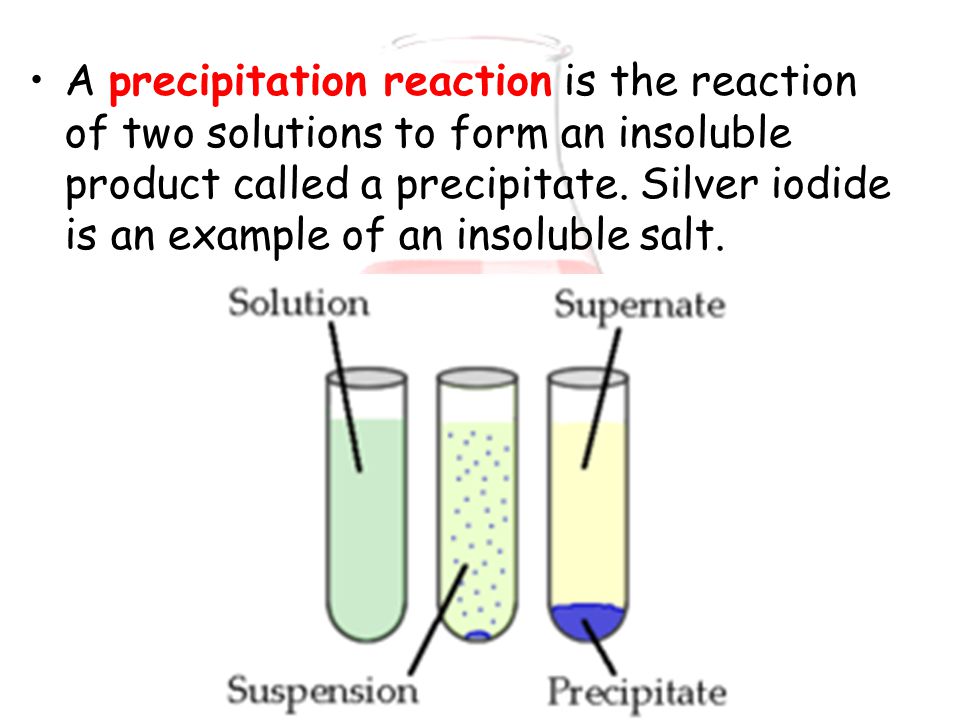

Select a piece of coarse or medium porosity filter paper that fits flat on the perforated floor of the funnel so that all of the holes are covered. The pinch clamp provides a convenient valve to produce or break vacuum in the system. The trap is used to prevent water from backing up from the faucet to contaminate the filtrate. The vacuum is provided by an aspirator on the water faucet. A typical vacuum filtration set-up is shown in Figure PAGENUM. In this course you will do vacuum filtrations with Büchner funnels equipped with filter paper when less than 100 percent recovery of precipitate is required and with glass-fritted crucibles when 100 percent recovery of precipitate is required. Vacuum filtration of crystalline precipitates has the advantage of increased speed over gravity filtration because of the greater pressure differential between the top surface of the liquid and the bottom side of the filter paper or glass frit provided by the vacuum.
#Chem precipitate definition free

Never fill the cone completely, since many precipitates tend to creep upward and may be par- tially lost.
#Chem precipitate definition full
Try to keep the filter paper about 3/4 full of liquid during filtration to provide maximum filtra- tion speed.Utilize a rubber policeman on the end of a stirring rod to get the last grains of precipitate out of the beaker in a quantitative transfer.Employ a stream of solvent from a wash bottle to transfer the final portion of precipitate if quantitative transfer is required.Use a stirring rod to direct the flow of liquid into the funnel and prevent small amounts of liquid from running down the outside of the beaker when the transfer process is interrupted.The major transfer is done with the last wash. If the precipitate needs to be washed, the washing is most efficiently done while the solid is still in the beaker.Transfer the bulk of the solid during the last stages of the filtration process.This is done to prevent early accumulation of precipitate on the filter paper which would slow the filtration process. Then carefully decant (pour off liquid leaving solid in container) the supernatant liquid through the filter.Before filtering the mixture, allow the solid to settle to the bottom of the beaker.Transferring the mixture: If it is important to quantitatively (completely) transfer the solid to the filter paper, a beaker should be used as a transfer vessel rather than a flask.


The folding steps are illustrated in Figure PAGENUM. Much of this depends upon correct folding and positioning of the paper. Filter paper folding and positioning: Maximum advantage of capillary attraction must be taken to speed the passage of the filtrate through the paper.Sargent Welch S-32915, Whatman 1, and E-D 617 have appropriate pore size for work in this course. Filter paper porosity: Filtration operations in General Chemistry involve crystalline precipitates of relatively large crystal size so that coarse or medium porosity filter paper is used.Optimum filtration performance is achieved by the appropriate selection of filter paper porosity, by proper folding and positioning of the filter paper, and by following a few simple technique guidelines described below: It is convenient to support the filter funnel by a utility clamp. Gravity filtration usually utilizes the long stem funnel with normal quarter-folded 11 cm diameter filter paper (Figure PAGENUM), when the filtration is done at room temperature or below.


 0 kommentar(er)
0 kommentar(er)
